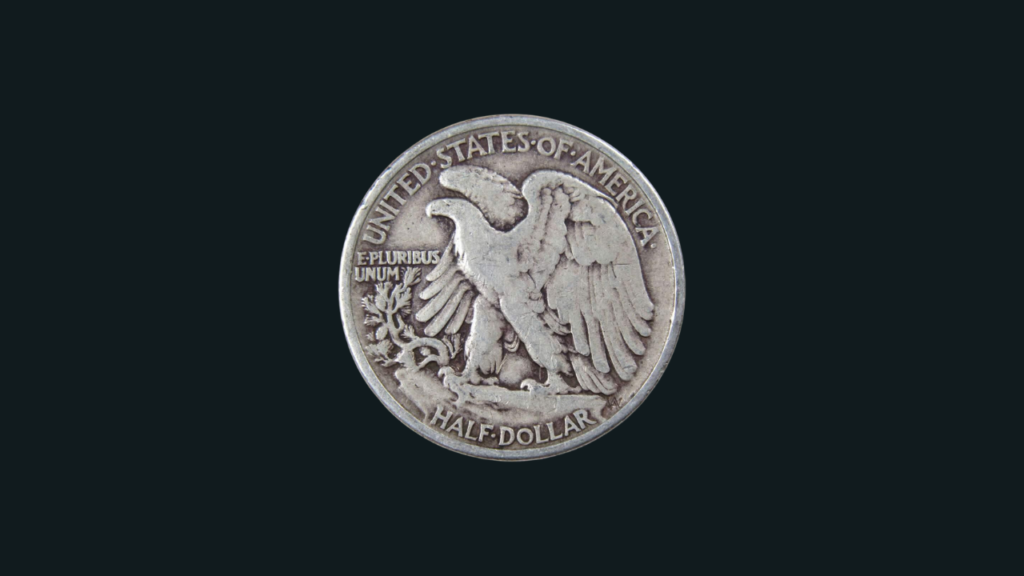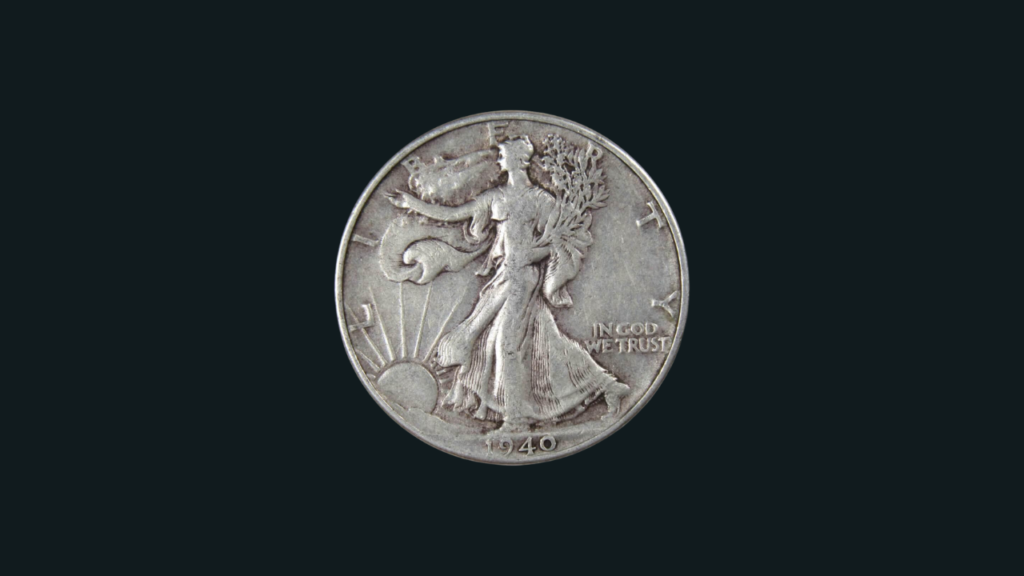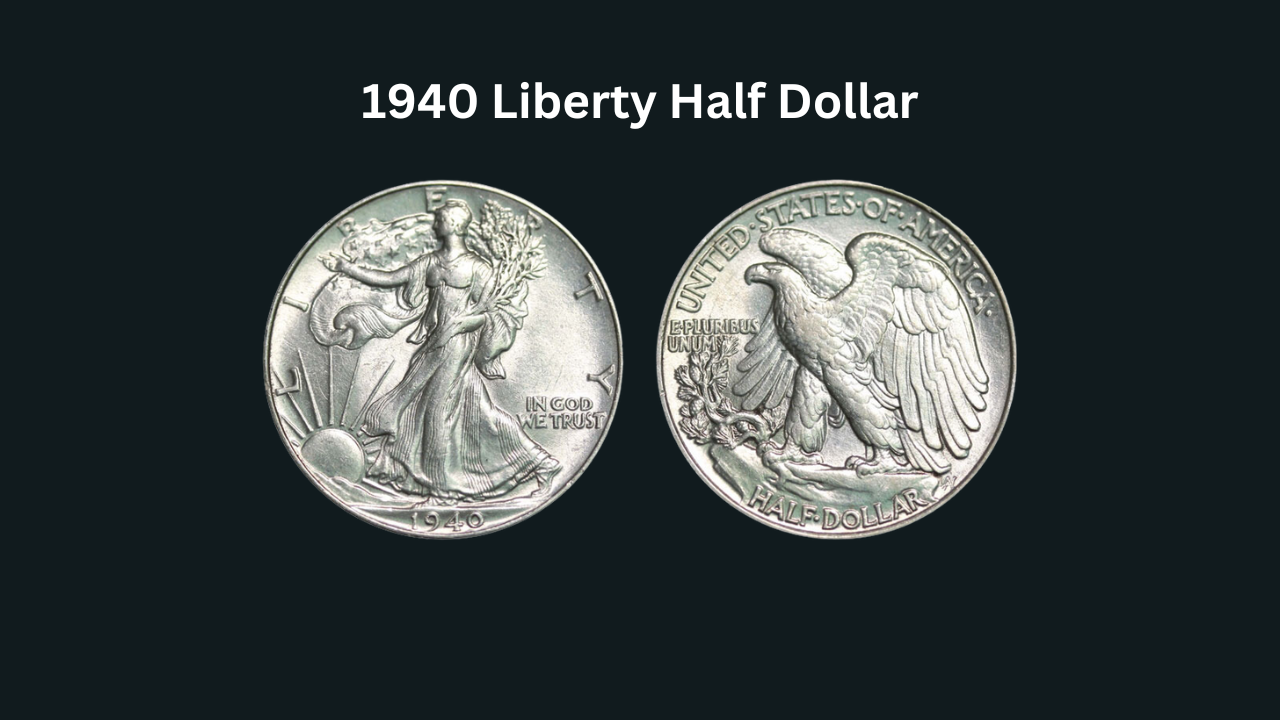The 1940 Liberty Half Dollar is a sought-after coin for collectors, thanks to its unique design and historical significance. This guide will walk you through the fascinating details of the 1940 Liberty Half Dollar, including its background, types, and current market value.
Background of the 1940 Liberty Half Dollar
Created by Adolph A. Weinman, the 1940 Liberty Half Dollar, also known as the “Walking Liberty” coin, was minted between 1916 and 1947.
This coin, cherished for its beauty and intricate design, is composed of 90% silver and 10% copper. With a diameter of 30 mm and weighing 12.50 grams, it’s more than just a piece of currency; it’s a symbol of American heritage.
Design Details:

- Obverse: Lady Liberty strides confidently toward the rising sun, embodying hope and progress. Above her head is the word “LIBERTY,” while the year “1940” is engraved below. The phrase “IN GOD WE TRUST” is placed behind her.
- Reverse: The back of the coin features a detailed eagle with spread wings, perched on a branch with a small pine seedling. Surrounding the eagle are the words “UNITED STATES OF AMERICA” and “HALF DOLLAR.”
1960 Franklin Half Dollar Value Guide: Is This Silver Coin in Your Collection?
1940 Liberty Half Dollar Varieties
There are two main varieties of the 1940 Liberty Half Dollar, based on the mint location: Philadelphia and San Francisco. Let’s break down their details:
| Variety | Mint Location | Mint Mark | Quantity Produced |
|---|---|---|---|
| 1940 Proof Liberty Half Dollar | Philadelphia | None | 11,279 |
| 1940 S Walking Liberty Half Dollar | San Francisco | S | 4,550,000 |
| 1940 P Liberty Half Dollar | Philadelphia | None | 9,156,000 |
Each variety has unique characteristics, and some coins are considered rare due to low mintage or distinctive qualities. The San Francisco mint coins are particularly valued for their uncirculated condition, while Philadelphia mint coins offer a more affordable option.
Value of the 1940 Liberty Half Dollar
The 1940 Liberty Half Dollar can be surprisingly valuable, depending on its condition and variety. Coins with higher grades and better preservation often fetch a premium price. Here’s a quick look at the current values for each type and grade:
| Coin | Condition | Grade | Value Range |
|---|---|---|---|
| 1940 Proof Liberty Half Dollar | About Uncirculated (AU-58) | $145 – $192 | |
| 1940 Proof Liberty Half Dollar | Gem Uncirculated (PR-65) | $312 – $505 | |
| 1940 S Walking Liberty Half Dollar | Uncirculated (MS-60) | $42 – $186 | |
| 1940 P Liberty Half Dollar | Superb Gem Uncirculated (MS-68) | $360 – $660 |
Note: These values fluctuate based on market demand and the price of silver.
Why the 1940 Liberty Half Dollar is Valuable?

Aside from its beauty and historical relevance, the 1940 Liberty Half Dollar holds significant value in the coin market. Here’s why:
- Rarity: Some varieties, particularly those minted in San Francisco, are rare in high-grade conditions.
- Historical Significance: The coin symbolizes American progress, making it appealing to history enthusiasts and collectors alike.
- Material Worth: Containing 90% silver, its melt value alone can make it worth more than face value, especially when silver prices rise.
Collectors Alert! The ‘Bugs Bunny’ Franklin Half Dollar Could Be Worth $5,000!
How to Buy or Sell the 1940 Liberty Half-Dollar?
The 1940 Liberty Half Dollar can be bought and sold on platforms like eBay, Amazon, and specialized coin trading sites. You can also visit coin shops, antique stores, and pawn shops. Auctions, both online and in-person, are great options for collectors aiming to buy rare varieties or for sellers hoping to get competitive offers.
Whether you’re a novice collector or a seasoned enthusiast, the 1940 Liberty Half Dollar offers a glimpse into the past and can serve as a valuable addition to any collection.
Editorial Note: This article was created through automated technology, with all details verified and polished by our editorial expert..

